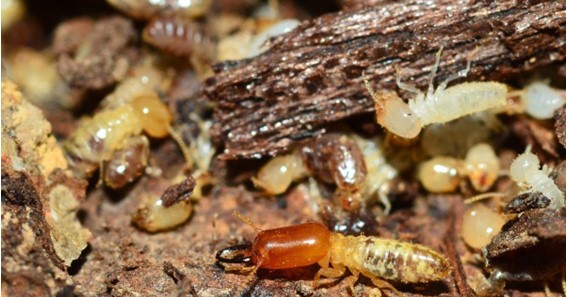Termites can severely damage your home if unnoticed. Early detection is critical to avoiding costly repairs. Look for signs like hollow wood, discarded wings, and mud tubes along walls. These indicate a potential termite infestation requiring immediate attention.
Acting swiftly can save time and money, preventing the issue from escalating. Regular inspections for these signs are crucial in protecting your property. If you suspect termites, take action quickly to safeguard your home and investment.
Identifying Signs of Termites
Recognizing the presence of termites in your home is essential for early intervention. Certain indicators can reveal their activities and potential damage. Look for physical signs and audible and visual symptoms that might suggest an infestation.
Physical Termite Indicators
Check your property for specific signs of termite damage. Common indicators include:
- Wood Damage: Look for hollow-sounding wood or soft spots. Termites eat the interior of wood, leaving the outer layer intact.
- Mud Tubes: These pencil-sized tunnels are typically found on walls or near the foundation. They provide moisture and protection for termites.
- Frass: This term refers to termite droppings, which look like small pellets. If you find these near wood areas, it’s a strong sign.
- Swarmers or Wings: Look for discarded wings around windowsills or entryways. Swarmers indicate a mature colony nearby.
If you observe any of these indicators, take action immediately.
Audible and Visual Symptoms
In addition to physical signs, listen and look for symptoms that reveal a termite problem:
- Wood Clicking Sounds: If you hear soft clicking noises, this may be worker termites communicating within the wood.
- Visible Holes: Small holes in wood surfaces may suggest that termites feed actively.
- Moist Areas: Termites thrive in wet conditions. Notice any unusual moisture or water damage, as this could attract them.
Regular inspections can help catch these symptoms early. Staying vigilant allows you to act quickly if termites are present.
Assessing Termite Damage
Identifying termite damage in your home is essential for effective treatment. Understanding both structural and cosmetic impacts can guide your next steps.
Structural Impact
Termites mainly target wood structures, causing significant damage. Look for hollow-sounding wood, frass (termite droppings resembling sawdust), and mud tunnels. Structural damage can compromise safety, so seek professional assessment immediately if these signs are present.
Cosmetic Damage
Termites also cause cosmetic damage, affecting walls, baseboards, and furniture. Watch for surface blisters, discoloration, and small holes in wood surfaces. Addressing both structural and cosmetic damage preserves your home’s safety and appearance.
Critter Stop: Experts Against Termites
Detecting termites early is vital to preventing severe home damage. Watch for mud tubes, termite droppings (frass), and squeaky floorboards. These signs may indicate an infestation that requires immediate attention.
Critter Stop, experts in humane wildlife removal, can assess your property to determine the extent of termite activity. Symptoms like hollowed-out wood, peeling paint, and swollen ceilings or floors suggest escalating damage.
Don’t wait—contact Critter Stop for a free inspection. Their commitment to quality work and excellent customer service has earned them a stellar reputation. Regular inspections ensure your home remains termite-free and protected.
–

